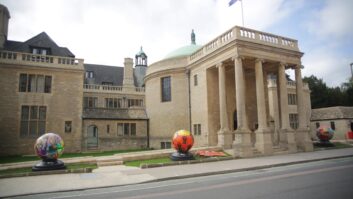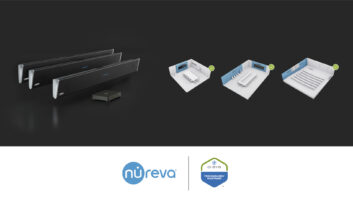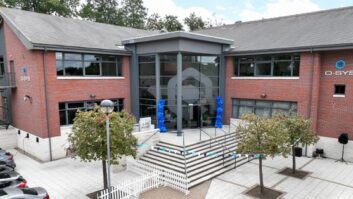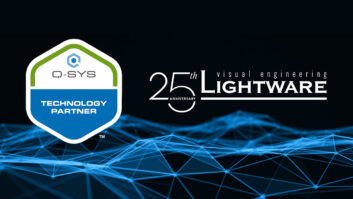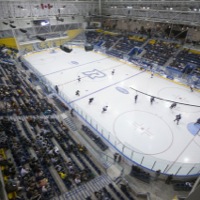
The newly opened Mattamy Athletic Centre (MAC), Toronto, Canada, features a brand new audio network infrastructure driven by three QSC Q-Sys Core 1000 processors and more than 32 QSC amplifiers to power loudspeakers around the facility.
The site had previously been home to the historic Maple Leaf Gardens ice hockey arena, before a complete rebuild project which began in 2010.
The MAC multi-purpose, four-story building now houses a 70,000sqft. Loblaw’s food store at street level with Ryerson University’s new 222,970sqft. sports facilities, including an NHL-sized ice hockey rink, multi-purpose courts and other amenities, on its upper levels.
Toronto-based Mulvey & Banani International elected to use the Q-Sys Core 1000 processors—the first Q-Sys units to be installed in Canada—to provide flexible and scalable DSP audio networking and signal distribution. Westbury National, meanwhile, handled integration.
Q-Sys manages the sound reinforcement system in the 2,600-plus-seat ice rink, provides zoned paging to all of the installed sound systems in the MAC and facilitates room combining in the conference suites, while also allowing for future expansion.
The three Q-Sys Core 1000 processors manage three main zones in the MAC’s upper floors: the ice hockey arena; the 1,000-seat Coca-Cola Court, which hosts basketball, volleyball and other sports; and the remainder of the public areas, which include a fitness center, gymnasium, studios and meeting rooms. The three Core 1000 processors and four I/O Frames are located in various rack rooms on the second and fourth floors and in the arena control room.
More than 32 QSC amplifiers were also installed at the Mattamy Athletic Center. 20 QSC CX902 and four CX602V two-channel amplifiers power the installed speakers in the ice hockey arena and the gym. Eight QSC CX204V four-channel amps drive the MAC’s various 70V distributed audio systems.
According to Devy Breda, CET, CTS, senior AV systems designer at Mulvey & Banani, the audio systems in each of the three areas can operate independently. “Paging is matrixed within that; reception or the front desk can page into any zone including those spaces. In each space you have a complement of microphone and line inputs and outputs for plugging in sources and sending signals to media or broadcasters. There are panels at strategic places within each of those spaces for a multitude of I/O, both analog and digital.”
He added, “The technology employed is adaptable and can be easily reconfigured for other events and uses: the resources Q-Sys provides are a great foundation for a complex system design.”

